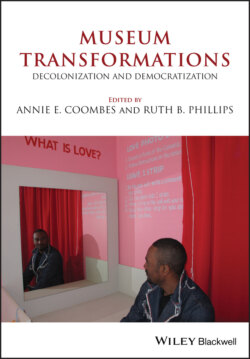Читать книгу Museum Transformations - Группа авторов - Страница 41
The outcome
ОглавлениеThe exhibition concept that eventually emerged from fraught discussions is an exemplary portrayal of the individual fates of victims of the Holocaust from across Europe. In accordance with contemporary exhibition culture, it is subjectcentered. Visitors are encouraged to empathetically acknowledge individual life stories, particularly in regard to the history of the Holocaust (Köhr 2008; Geissler 2011). The variety of the biographies allows us to perceive Jewish life across Europe before the Holocaust in all its diversity (see Figure 1.4).
FIGURE 1.4 Room of Families, Memorial to the Murdered Jews of Europe. Different social, national, and religious Jewish milieus are shown in this room, based on the fates of 15 Jewish families. The stories of these Jewish families reflect the diversity of Jewish culture and tradition in Europe before the Holocaust. Photos and personal documents bear witness to the dissolution, expulsion, and extermination of these families and their members.
© Foundation Memorial to the Murdered Jews of Europe, Lepkowski, 2008.
Interest in Jewish milieus especially in the countries of eastern Europe (e.g., Poland, Russia, and Lithuania) has not been very strong in the past, at least in Germany, in contrast to many other countries. The center’s exhibition hence fills a knowledge gap, particularly for many young Germans. At the same time, it not only conveys knowledge about the victims of the Holocaust, but also fulfills the center’s aspiration to provide information about those responsible for the crimes. This aspect of Germany’s Nazi past becomes visible in the historical presentation of the different stages in the escalation of violence and the naming of the perpetrators in the entry foyer. Another important element of the center is the portal of memorial sites located in the exit foyer. This enables visitors to find their way to other exhibitions and institutions, particularly those located at the original historical sites in Germany and abroad. In an adjacent room visitors can view videos from an archive of interviews with survivors which the foundation has established in cooperation with the Fortunoff Archives at Yale University (Baranowski 2009; Foundation Memorial to the Murdered Jews of Europe 2010, 14–54). The last of the four exhibition rooms, the Room of Sites, shows films and images of places where European Jews were persecuted and killed, and of ghettos, deportation routes, and death marches. Between showcases in the shape of stelae, there are niches in which one can hear individual eyewitness reports from these sites.
